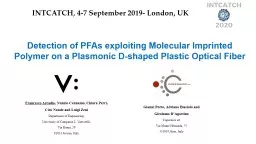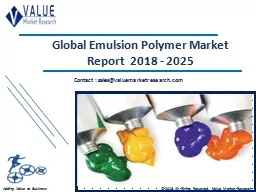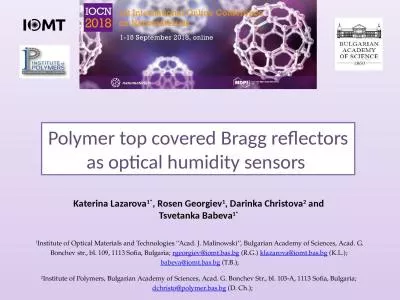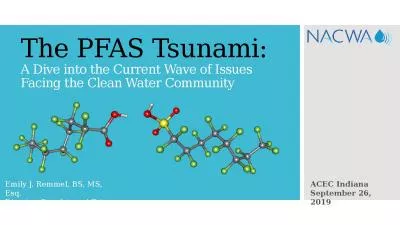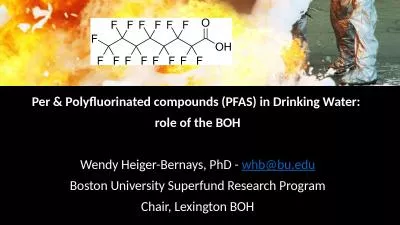PPT-Detection of PFAs exploiting Molecular Imprinted Polymer on a Plasmonic D-shaped Plastic
Author : spottletoefacebook | Published Date : 2020-08-27
Francesco Arcadio Nunzio Cennamo Chiara Perri Ciro Natale and Luigi Zeni Department of Engineering University of Campania L Vanvitelli Via Roma 29 81031
Presentation Embed Code
Download Presentation
Download Presentation The PPT/PDF document "Detection of PFAs exploiting Molecular I..." is the property of its rightful owner. Permission is granted to download and print the materials on this website for personal, non-commercial use only, and to display it on your personal computer provided you do not modify the materials and that you retain all copyright notices contained in the materials. By downloading content from our website, you accept the terms of this agreement.
Detection of PFAs exploiting Molecular Imprinted Polymer on a Plasmonic D-shaped Plastic: Transcript
Download Rules Of Document
"Detection of PFAs exploiting Molecular Imprinted Polymer on a Plasmonic D-shaped Plastic"The content belongs to its owner. You may download and print it for personal use, without modification, and keep all copyright notices. By downloading, you agree to these terms.
Related Documents

